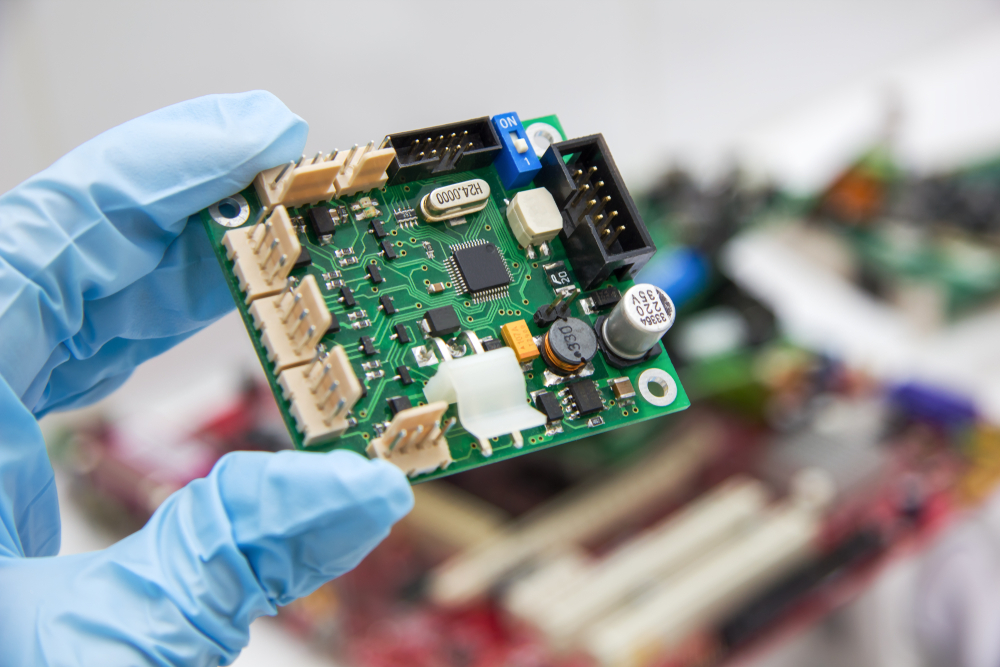When it comes to designing implantable patient monitoring devices, selecting the right PCB materials is critical for ensuring long-term reliability and patient safety. Engineers and manufacturers often ask: what materials provide the best implantable medical PCB reliability, resist corrosion, and remain biocompatible over extended periods? The answer lies in choosing materials that balance durability, biocompatibility, and performance under the harsh conditions inside the human body. In this blog, we dive deep into the world of PCB materials for implantable devices, exploring options for biocompatible long-term boards, corrosion-resistant boards, and more. Let’s uncover the key factors and material breakdowns that ensure success in medical applications.
Why Material Selection Matters for Implantable Medical PCBs
Implantable patient monitoring devices, such as pacemakers, glucose monitors, and neurostimulators, must operate flawlessly for years inside the body. These devices face unique challenges like exposure to bodily fluids, temperature fluctuations, and mechanical stress. A single failure in the PCB can lead to device malfunction, posing serious risks to the patient. That’s why selecting materials for implantable medical PCB reliability is non-negotiable.
Materials must not only withstand corrosion but also be biocompatible to avoid adverse reactions with human tissue. They need to support high-density designs for compact devices and maintain signal integrity for accurate monitoring. In the sections below, we’ll break down the essential material properties and specific options that meet these stringent demands.

Key Properties of Materials for Biocompatible Long-Term Boards
For a PCB to qualify as a biocompatible long-term board, it must exhibit specific characteristics. These properties ensure the board can survive the body’s environment without degrading or causing harm. Here are the core requirements:
- Biocompatibility: The material must not trigger immune responses or toxic reactions. It should comply with standards like ISO 10993, which governs biocompatibility testing for medical devices.
- Corrosion Resistance: Exposure to bodily fluids, which are often saline and slightly acidic, can corrode standard PCB materials. Corrosion-resistant boards are essential to prevent short circuits or material breakdown.
- Thermal Stability: The material must handle body temperature (around 37°C or 98.6°F) and minor fluctuations without warping or losing electrical properties.
- Mechanical Durability: Implantable devices may experience stress from body movements, so the PCB material must resist cracking or delamination.
- Electrical Performance: High signal integrity is vital for accurate data transmission in patient monitoring. Materials should have low dielectric loss and stable impedance, often in the range of 50 ohms for high-frequency signals.
With these properties in mind, let's explore the specific materials that meet these criteria for long-term use.
Material Breakdown for Medical PCBs: Top Choices for Reliability
Understanding the material breakdown for medical PCBs helps engineers make informed decisions. Below, we detail the most suitable substrates, coatings, and conductive materials for implantable devices, focusing on reliability and biocompatibility.
1. Substrate Materials for Biocompatible Long-Term Boards
The substrate forms the foundation of any PCB, and for implantable devices, it must be both durable and safe. Common choices include:
- Polyimide: Known for its flexibility and thermal stability, polyimide is a popular choice for biocompatible long-term boards. It can withstand temperatures up to 260°C (500°F) during manufacturing and remains stable at body temperature. Its flexibility also suits compact, curved designs in implantable devices.
- FR-4 with Biocompatible Coatings: While standard FR-4 isn’t inherently biocompatible, it can be used with specialized coatings (discussed later) to prevent direct exposure to bodily fluids. It offers a cost-effective option with good mechanical strength.
- Ceramic Substrates: Materials like alumina and aluminum nitride provide excellent thermal conductivity and corrosion resistance. They’re often used in high-reliability applications where heat dissipation is critical, though they are more rigid and expensive.
Polyimide often emerges as the top choice due to its balance of flexibility, durability, and compatibility with biocompatible coatings. Its dielectric constant (around 3.5) also supports stable signal transmission at frequencies up to 1 GHz, which is crucial for wireless monitoring devices.

2. Conductive Materials for Corrosion-Resistant Boards
The conductive traces on a PCB are prone to corrosion when exposed to moisture and salts in the body. For corrosion-resistant boards, the choice of metal is critical. Here are the leading options:
- Gold Plating: Gold is highly resistant to corrosion and offers excellent conductivity. It’s often used as a surface finish for traces and contact points in implantable PCBs. A typical thickness of 1-3 micrometers ensures long-term reliability without excessive cost.
- Platinum: In some high-end applications, platinum is used for its superior biocompatibility and resistance to oxidation. It’s common in neurostimulators where electrodes interface directly with tissue.
- Copper with Protective Layers: While copper is standard for PCB traces, it corrodes easily. Combining it with nickel underlayers and gold topcoats prevents degradation while maintaining conductivity.
Gold-plated traces are the industry standard for balancing cost and performance, ensuring that corrosion-resistant boards maintain electrical integrity over decades.
3. Encapsulation for Encapsulated Component Boards
Encapsulation is a vital step in protecting PCB components from the body’s environment. An encapsulated component board uses protective coatings to shield sensitive electronics from moisture and mechanical stress. Common encapsulation materials include:
- Silicone: Medical-grade silicone is flexible, biocompatible, and resistant to moisture. It’s often used to encase entire PCBs or specific components, providing a barrier against fluids while allowing some flexibility.
- Parylene: This thin, conformal coating offers excellent moisture resistance and biocompatibility. Parylene C, a common variant, can be applied in layers as thin as 0.1 micrometers, ensuring minimal added bulk to the device.
- Epoxy Resins: Certain biocompatible epoxies provide robust protection against mechanical stress and fluids. They’re often used in combination with other coatings for added durability.
Parylene stands out for its ability to form a uniform, pinhole-free barrier, making it a top choice for encapsulated component boards in implantable devices. Its dielectric strength (around 5,000 V/mil) also prevents electrical interference.

Designing High-Density Connector PCBs for Implantable Devices
Implantable patient monitoring devices often require compact designs with multiple connections for sensors, power, and data transmission. A high-density connector PCB allows for more components and connections in a smaller footprint. Material selection plays a big role in achieving this.
- Thin Substrates: Using thin polyimide layers (as low as 0.05 mm) enables tighter spacing of traces and vias, supporting high-density layouts.
- Fine-Pitch Traces: Gold-plated traces with widths as small as 0.075 mm ensure reliable connections in confined spaces without signal loss.
- Multilayer Designs: Multilayer PCBs, often with 6-10 layers, allow for complex routing while maintaining a small form factor. Dielectric materials with low loss tangent (below 0.005) are essential to prevent crosstalk at high frequencies.
By combining thin, biocompatible substrates with precise manufacturing, engineers can create high-density connector PCBs that fit within the tight constraints of implantable devices.
Challenges in Ensuring Long-Term Reliability
Even with the best materials, achieving implantable medical PCB reliability comes with challenges. Here are some common hurdles and how material choices help overcome them:
- Moisture Ingress: Bodily fluids can penetrate even small gaps, leading to corrosion or short circuits. Encapsulation with materials like Parylene minimizes this risk.
- Material Fatigue: Repeated mechanical stress from body movements can cause cracks. Flexible substrates like polyimide absorb stress better than rigid alternatives.
- Signal Degradation: Over time, high-frequency signals (e.g., 2.4 GHz for wireless communication) can degrade due to material aging. Low-loss dielectrics and stable conductive finishes maintain performance.
Addressing these challenges through smart material selection and design ensures that implantable devices remain reliable for 10-15 years or more, matching the expected lifespan of many monitoring systems.

Testing and Standards for Medical PCB Materials
Before a PCB can be used in an implantable device, it must pass rigorous testing to ensure safety and reliability. Key standards include:
- ISO 10993: Tests for biocompatibility, including cytotoxicity, sensitization, and irritation.
- IPC-6012 (Medical Addendum): Specifies performance requirements for medical-grade PCBs, including trace spacing and insulation resistance (typically above 10^9 ohms).
- Accelerated Aging Tests: Simulates long-term exposure to body conditions, often at elevated temperatures (e.g., 55°C) and humidity (95% RH) to predict a device’s lifespan.
Manufacturers must also conduct electrical testing to verify impedance stability (e.g., maintaining 50 ohms ±5%) and signal integrity over time. These standards ensure that materials for biocompatible long-term boards and corrosion-resistant boards meet the highest safety criteria.
Future Trends in PCB Materials for Implantable Devices
The field of implantable medical devices is evolving rapidly, and so are the materials used in PCBs. Emerging trends include:
- Bioabsorbable Materials: Researchers are exploring substrates that dissolve harmlessly in the body after the device’s useful life, reducing the need for surgical removal.
- Nanomaterials: Nanocoatings and conductive inks promise even thinner, more flexible PCBs with enhanced corrosion resistance.
- Hybrid Designs: Combining rigid and flexible materials in a single board optimizes space and durability for complex monitoring systems.
These innovations will further improve implantable medical PCB reliability, making devices safer and more efficient for long-term use.
Conclusion: Building Reliable PCBs for Patient Safety
Designing PCBs for implantable patient monitoring devices requires careful consideration of materials to ensure implantable medical PCB reliability. From selecting biocompatible long-term boards like polyimide to using corrosion-resistant boards with gold plating, every choice impacts the device’s performance and safety. Encapsulation with materials like Parylene creates encapsulated component boards that withstand the body’s harsh environment, while advanced designs enable high-density connector PCBs for compact, powerful systems.
By understanding the material breakdown for medical PCBs and adhering to strict testing standards, engineers can build devices that monitor patients effectively for years. As technology advances, new materials and techniques will continue to push the boundaries of what’s possible, ensuring better outcomes for patients worldwide.
 ALLPCB
ALLPCB







